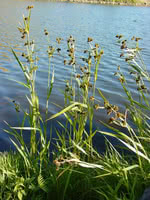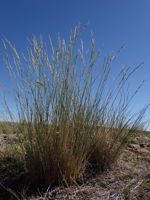Mon-Fri 9am - 5pm Mountain time
Green Bulrush vs Bluebunch Wheatgrass
Scirpus pallidus
Pseudoroegneria spicata (Agropyron spicatum)
CUSTOM GROW
CUSTOM GROW
Green Bulrush is a common waterside plant, suitable for erosion control and land reclamation. Despite this, Green Bulrush is very drought resistant once established. Bulrushes can cool nearby areas on hot days.
Unlike many of the other waterside plants available, Green Bulrush does not attract wildlife. This makes it a good choice for surrounding residential water sources.
Green Bulrush is topped with spiky balls of florets, green in the spring and fading to brown in the fall.
Bluebunch Wheatgrass is a native perennial bunchgrass common across prairies, foothills, and open woodlands. Longer-lived than many other grass species, it develops deep, fibrous roots that stabilize soils and make it drought-tolerant once established. It is a cool-season grass, growing most actively in spring and fall and slowing during the heat of summer.
This hardy grass provides excellent forage for deer, elk, and bighorn sheep, and is especially palatable to livestock. Its seeds feed birds and small mammals, while its bunching growth offers protective cover for ground-nesting birds such as sparrows and sage-grouse, as well as shelter for small mammals. Bluebunch Wheatgrass is well-suited to rangeland & prairie restoration, naturalization, and erosion control projects.

